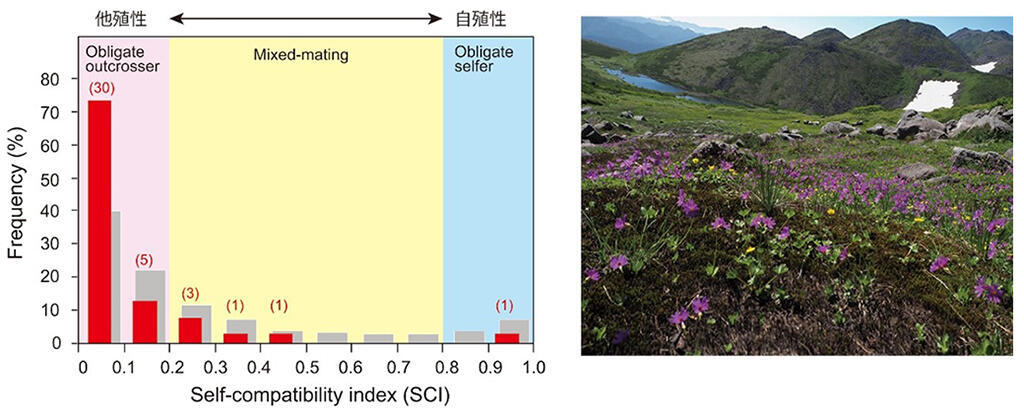Due to low insect activity in cold alpine environments, it has been speculated that many alpine plants do not receive adequate pollination and that many produce offspring through self-pollination. Associate Professor Gaku Kudo of the Graduate School of Environmental Science, Hokkaido University, found that many insect-pollinated plants specialize in cross-pollination through a 30-year ecological survey of alpine plants in the Taisetsu mountains of Hokkaido, which is the largest alpine ecosystem in Japan. The research was posted online in Ecological Research.

Provided by Hokkaido University
Associate Professor Kudo investigated flowering time, pollinator insects, fruiting rates, and reproductive systems of insect-pollinated alpine plants growing in the alpine belt of the Taisetsu mountains in Hokkaido, Japan. The survey period spanned 30 years and analyzed data from 46 species of plants and a total of 117 populations.
The results showed that, in 85% of the total species, seeds were produced solely by cross-pollination. The results also showed that, even for species that are capable of self-pollination, self-pollinated offspring contributed little to the maintenance of populations. In other words, it revealed that most alpine plants are specialized for cross-pollination and are strongly influenced by pollinator insects. Compared to the average tendencies of plant communities growing in a variety of environments on earth, it was found that alpine plant communities clearly have a high dependence on cross-pollination. Alpine plants growing in harsh environments are thought to have evolved reproductive characteristics that produce offspring by attracting insects with bright flowers and by promoting cross-pollination.
61% of the insects that visited alpine plants were flying insects such as flies and horseflies, and 36% were bumblebees. Most of the alpine plants relied on flies or bumblebees for pollination. Although flies are generally considered to have a lower pollination efficiency, flower visits were observed throughout the flowering period. Bumblebees, on the other hand, are excellent pollinators with high pollen-carrying capacity, but worker bees did not appear until later in the season. These differences in the seasonality of pollinating insects affected the fruiting patterns of fly-borne and bee-borne plants. No distinct seasonality was observed in the fruiting rates of fly-borne plants, but the fruiting rates of bee-borne plants increased as the season progressed. Flowering in the first half of the growing season resulted in poor pollination and limited fruiting, while flowering in the second half of the growing season, when worker bees emerged, greatly increased the fruiting rate.
Although it is predicted that the reason many alpine plants only reproduce through cross-pollination is because it is advantageous to maintain high genetic diversity in alpine environments, further research is required. Additionally, changes in flowering times due to climate change may disturb the symbiotic relationships between insects and alpine plants, so close attention must be paid to them in the future.
This article has been translated by JST with permission from The Science News Ltd.(https://sci-news.co.jp/). Unauthorized reproduction of the article and photographs is prohibited.




